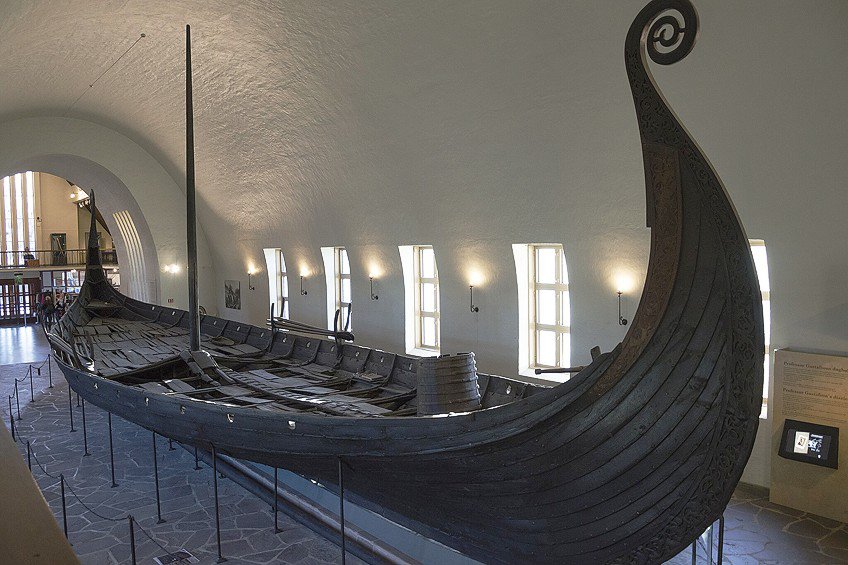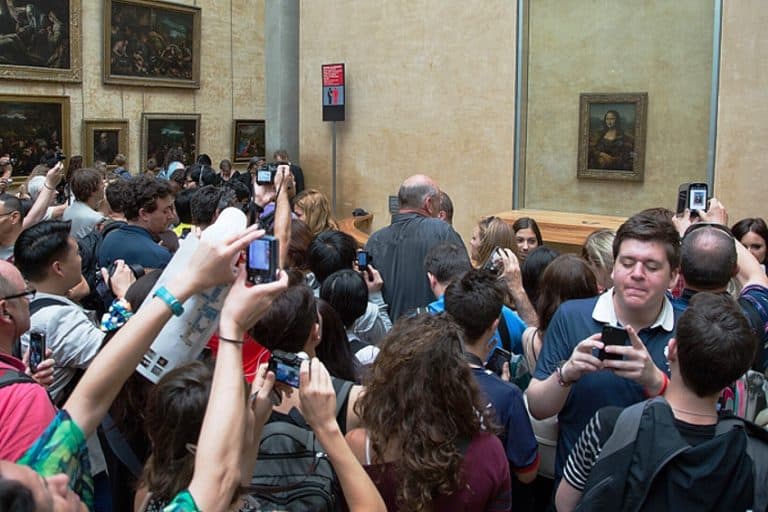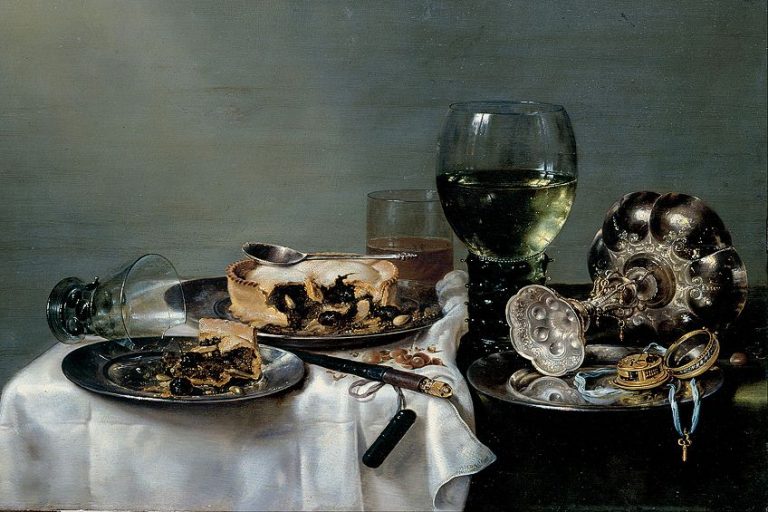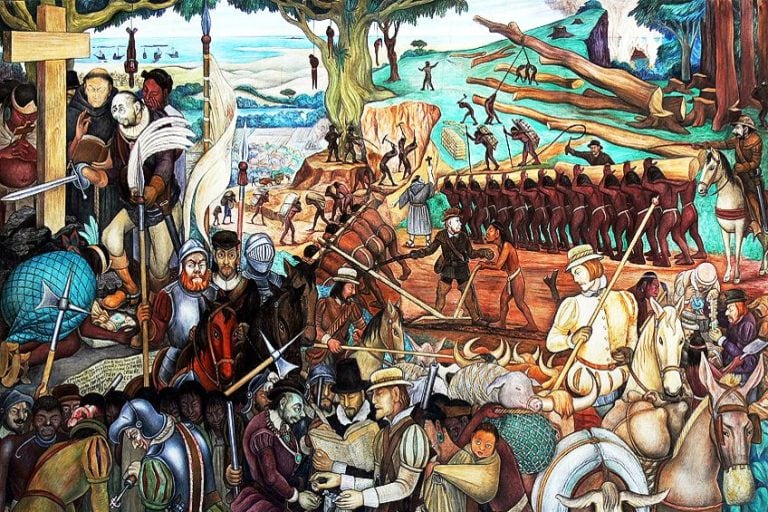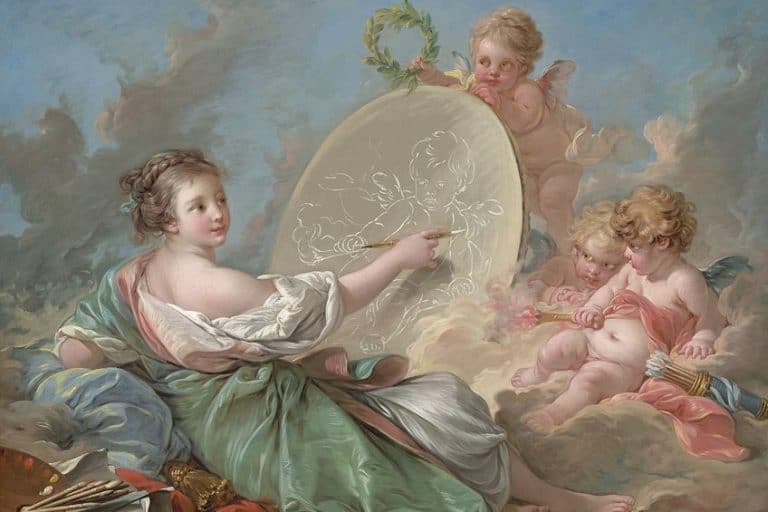Viking Artifacts – A Glimpse into Norse History
Viking artifacts have been found in various locations around Europe, but predominantly in Scandinavian regions. In this article, we will look at Norse artifacts, Viking swords, Norse mythology artifacts, and much more to learn more about these ancient people who sailed across the world in ages past. Let’s learn more about a few Viking artifacts below!
A Look at Viking Artifacts
The Vikings were a large group of disparate Scandinavian nations that dominated parts of Europe during their height in the Viking Age. We are going to look at some of the most famous instances of Viking artifacts from the period. There are many different types of Viking relics, such as Viking swords, hoards, ships, some of the most valuable Viking glassware, and the many items looted by the Vikings during the height of their power.
So, let’s get started and have a look at fifteen Viking artifacts.
Hunterston Brooch (700 CE) from Hunterston
| Date | 700 CE |
| Materials Used | Gold, silver, and amber |
| Function | Brooch |
| Discovery Location | Hunterston, Scotland |
The Hunterston Brooch is one of the oldest instances of Viking artifacts that has ever been found. The purpose of this ancient brooch would have been used to fasten clothing, and it was made with silver and decorated with animal forms. The brooch is currently only 13.1 cm long, but it would have originally been a few centimeters longer.
The discovery of the brooch is not entirely certain, as the discovery is dated as either 1826 or 1830.
However, it was supposedly found by two men who were digging at the foot of Goldenberry Hill near Hunterston to prepare the area for drains. They found it while digging these holes. One of the most interesting aspects of the brooch is that it includes an Old Norse inscription that states that it is the property of someone named Melbrigda.
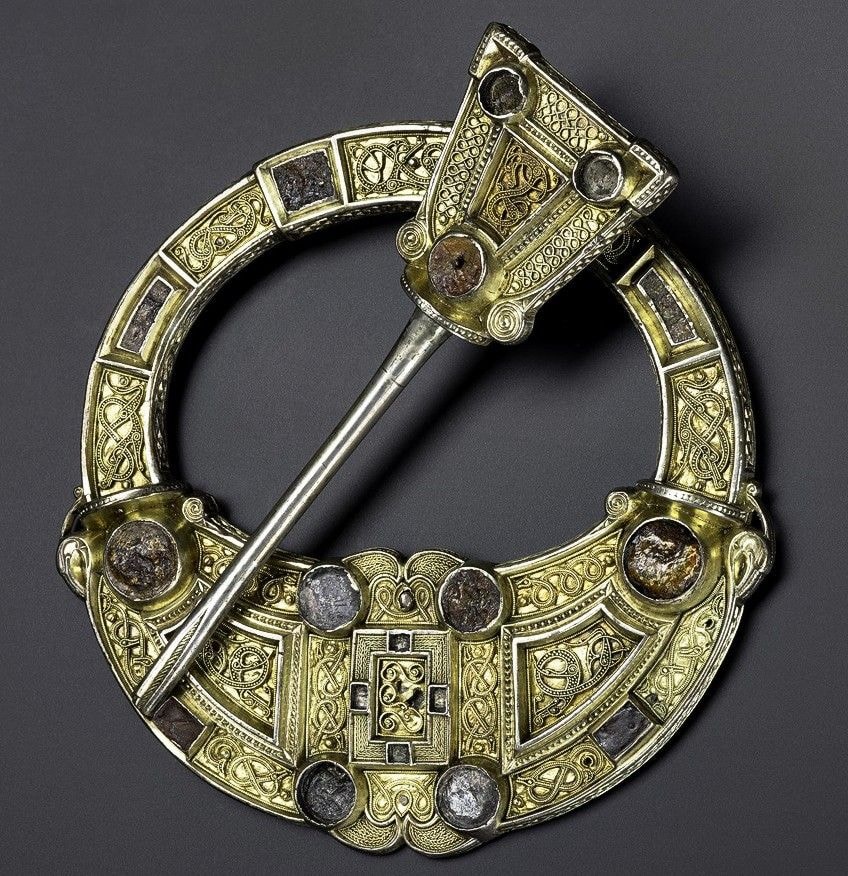
This inscription was likely added long after the brooch had been created, but this was rather commonly done. It is also one of the most ornate early brooches ever found and, as such, is an important part of the history of Viking artifacts.
Valkyrie (800 CE) from Hårby
| Date | 800 CE |
| Materials Used | Silver |
| Function | Figurine |
| Discovery Location | Hårby, Denmark |
The Valkyrie from Hårby is a small figurine that was found in Denmark. It’s a small item at only 3.4 cm (or 1.3 in) in height, but it was made of gold and colored black with niello. It depicts a woman in a long skirt, and she has a sword and a shield in her hands. It is believed that the image is a Valkyrie from Norse mythology.
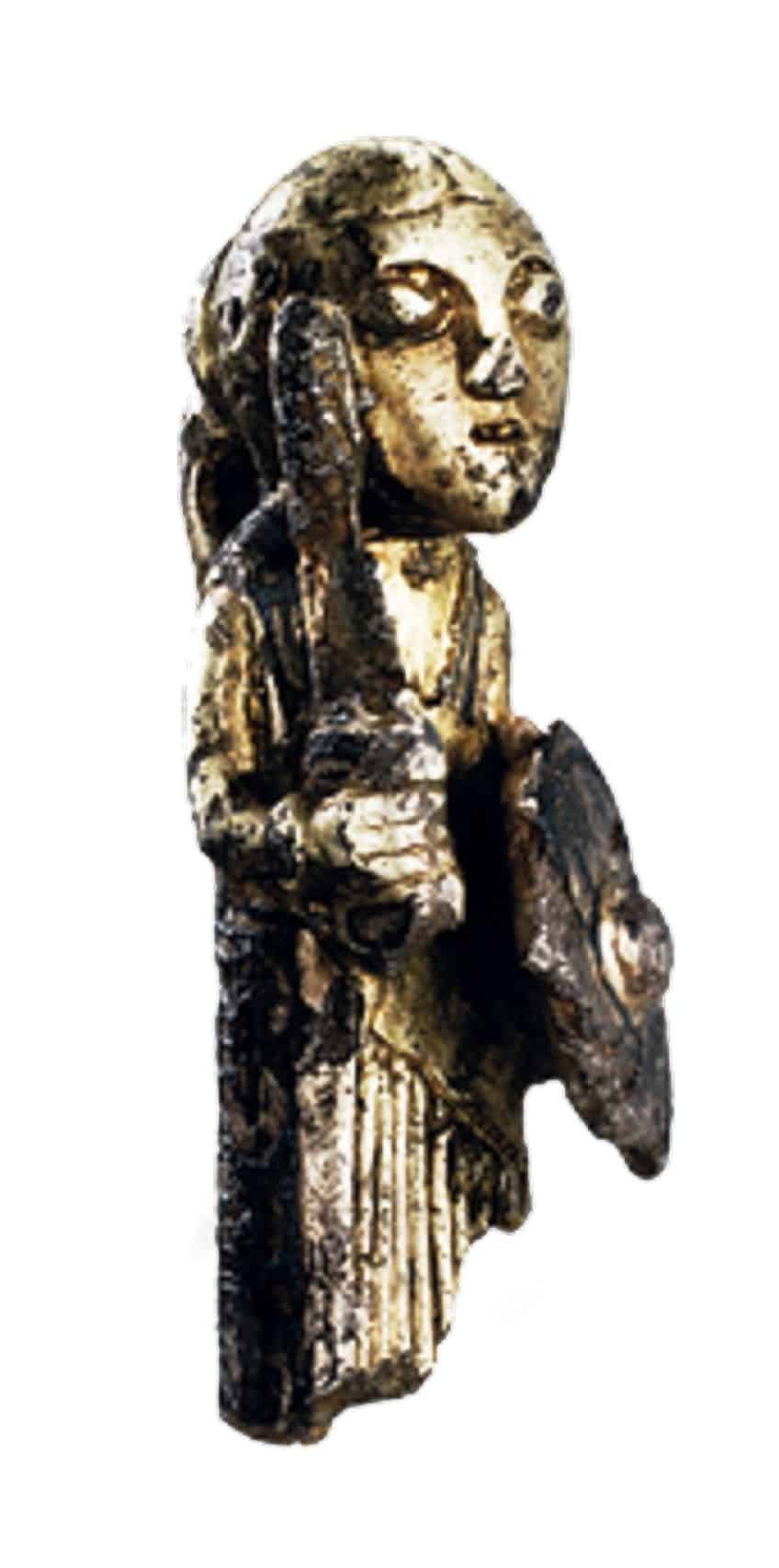
The figure was found by an amateur archaeologist in 2012 and has since been a permanent fixture in the National Museum of Denmark. Depictions of Valkyrie were fairly common at the time, and so it is not a necessarily unique Viking artifact, but it is a stunning example of the form.
Oseberg Ship (800 – 834 CE) from Tønsberg
| Date | 800 – 834 CE |
| Materials Used | Wood |
| Function | Ship |
| Discovery Location | Tønsberg, Norway |
The Oseberg Ship is one of the most famous of all Viking artifacts as it is an immensely well-preserved Viking ship that was found in a burial mound. The location of its discovery was just a farm, and the excavation of the ship led to it being moved to the Viking Ship Museum (which is currently closed for reconstruction at the time of writing and will only reopen in 2026).
The excavation of the ship also led to the discovery of two female human skeletons alongside many grave goods.
However, the ship itself has become the most notable aspect of the discovery. It is made predominantly from oak and is at a length of 21.58 m (or 70.8 ft) and a width of 5.10 m (or 16.7 ft). It has 15 openings for oars and the bow and stern are decorated in an elaborate display of Viking artistry.
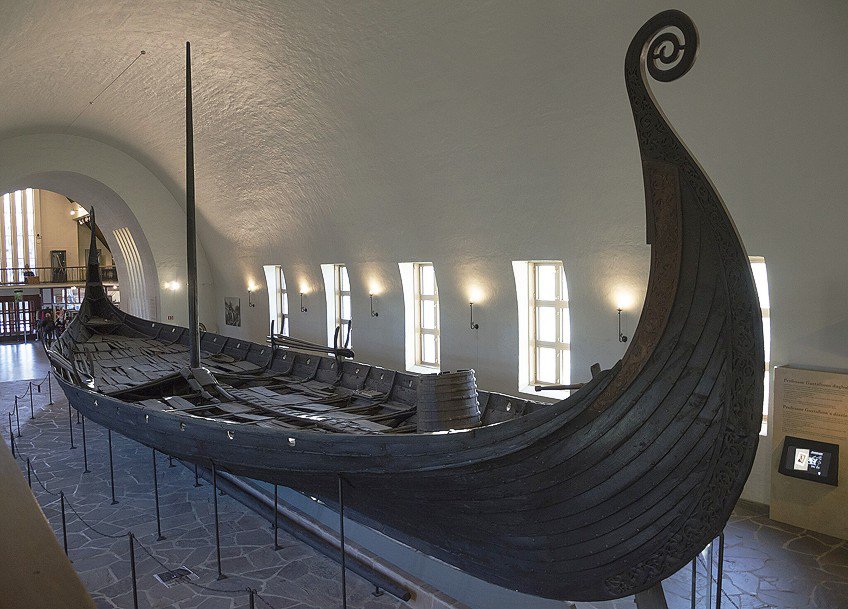
There have been several attempts to reconstruct the ship over the years with the early attempts ending in failure. It turned out that this was because of poor recording of the specific proportions of the ship. It was ultimately reconstructed between 2010 and 2012 and set sail in 2014. The trip was a success and thus showed that the ship was an actual ship and not simply a ship-shaped burial chamber.
Watlington Hoard (870s CE) from Watlington
| Date | 870s CE |
| Materials Used | Silver |
| Function | Hoard |
| Discovery Location | Watlington, England |
The Watlington Hoard is one of the many Viking hoards that has been discovered throughout the years. It was only discovered in 2015 and includes nearly 200 coins alongside ingots and jewelry. It appears to have been buried during the retreat of the Great Heathen Army after its defeat by Alfred the Great. The hoard is currently kept in the Ashmolean Museum in Oxford.

Ulfberht Swords (9th – 11th Centuries CE) from Northern Europe
| Date | 9th – 11th centuries CE |
| Materials Used | Steel |
| Function | Swords |
| Discovery Location | Throughout Northern Europe |
The Ulfberht swords are a large collection of Viking swords that were recovered from throughout the Northern European region. These blades have all become known under the same moniker because they all contain the same inscription. This word, Ulfberht, may indicate a common origin. However, we are not too certain, and these swords are also dated from between the 9th and 11th centuries. So, they were made over a long period of time.

These swords serve as a transitional point between the later medieval knight sword and the earlier Viking sword. They also may have a Frankish origin, but they were found far from the Frankish regions. However, this could also simply indicate that they were looted. The Ulfberht swords can be found in various museums.
Spillings Hoard (9th Century CE) from Slite
| Date | 9th century CE |
| Materials Used | Silver |
| Function | Hoard |
| Discovery Location | Slite, Sweden |
The Spillings Hoard is a stunning collection of Viking relics, and it is considered to be the largest of its kind to have ever been found. This is a silver hoard, the kind of which Vikings would often bury to be used in the afterlife. In this particular case, this hoard was made up of three separate sites, two of which weighed a hefty 67 kg (or 148 lb) and were made up of a collection of silver coins from a number of different locations, but predominantly from Islamic countries. The other was made up of a collection of bronze metal.
These fantastic hoards were found underneath the floorboards of an old Viking outhouse.
The collection was uncovered in a rather fascinating way. It had been part of a reporting job on Swedish television, and a team of reporters was looking at a site in which some items had been found. They decided to remain behind after the filming had officially concluded, and they found other caches with a metal detector. This then led to a full-blown investigation of the area, and the other items were soon discovered.

Each of these caches appears to have been buried in wooden boxes and in sacks, but those items degraded over the centuries to leave only the hoard behind. As this hoard was only actually found in 1999, it just goes to show that there are likely many more objects like this in seemingly random parts of the world just waiting for someone to stumble upon them.
Gjermundbu Helmet (900s CE) from Haugsbygd
| Date | 900s CE |
| Materials Used | Iron |
| Function | Helmet |
| Discovery Location | Haugsbygd, Norway |
The Gjermundbu helmet is a Viking Age helmet that was discovered on a farm in Norway. The stunning helmet was immediately taken in by the Museum of Cultural History in Oslo, and it was restored and put on display. The reason restoration was required was because the helmet was in nine separate pieces when it was discovered, but it was pieced back together.
The Viking artifact was made of iron.
There are very few Viking helmets that have been completely reconstructed as most did not survive through the centuries. There are also the Tjele and Yarm helmets that have been properly reconstructed. So, a find this rare is a stunning find in terms of Norse artifacts that can be properly displayed and studied.
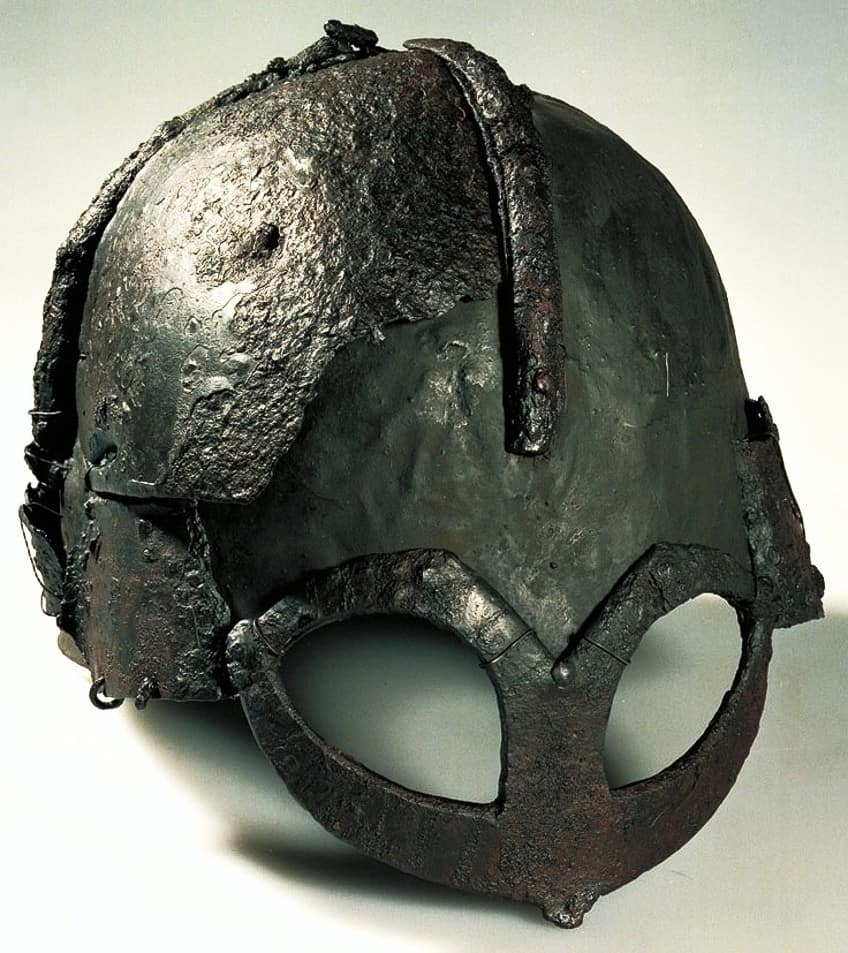
The site at which the helmet was found appears to have been a burial mound, and it was determined that the burial site must have belonged to an extremely rich Viking figure from the region. Other graves have been found in the same area and have been subject to study, but none of the Viking relics found there have been as notable as the Gjermundbu helmet.
Cuerdale Hoard (903 – 910 CE) from Cuerdale
| Date | 903 – 910 CE |
| Materials Used | Silver, ingots, and jewelry |
| Function | Hoard |
| Discovery Location | Cuerdale, England |
The Cuerdale Hoard is another of the exceptional Viking hoards that have provided a great deal of Norse artifacts for study. This particular hoard was made up of an exceptionally larger number of items. There were more than 8,600 in total, and these items were made up of a combination of items, such as silver coins, jewelry of both English and Carolingian design, and a number of ingots. It is the second largest of all the silver hoards that have been discovered, after the Spillings Hoard that has already been mentioned, and this indicates that it was likely also the hoard of a significant figure of some description.
However, unlike many of the other Viking hoards that have been discovered, this one was not located in a Scandinavian country and was instead found in England.
It was specifically discovered on a bend in the River Ribble, which is located near the town of Preston. There were many Vikings who settled in England over the years, and as such, it does make sense that there would be Viking hoards located in the region. Additionally, this hoard was discovered by mistake by a group of workmen who were repairing the embankment.
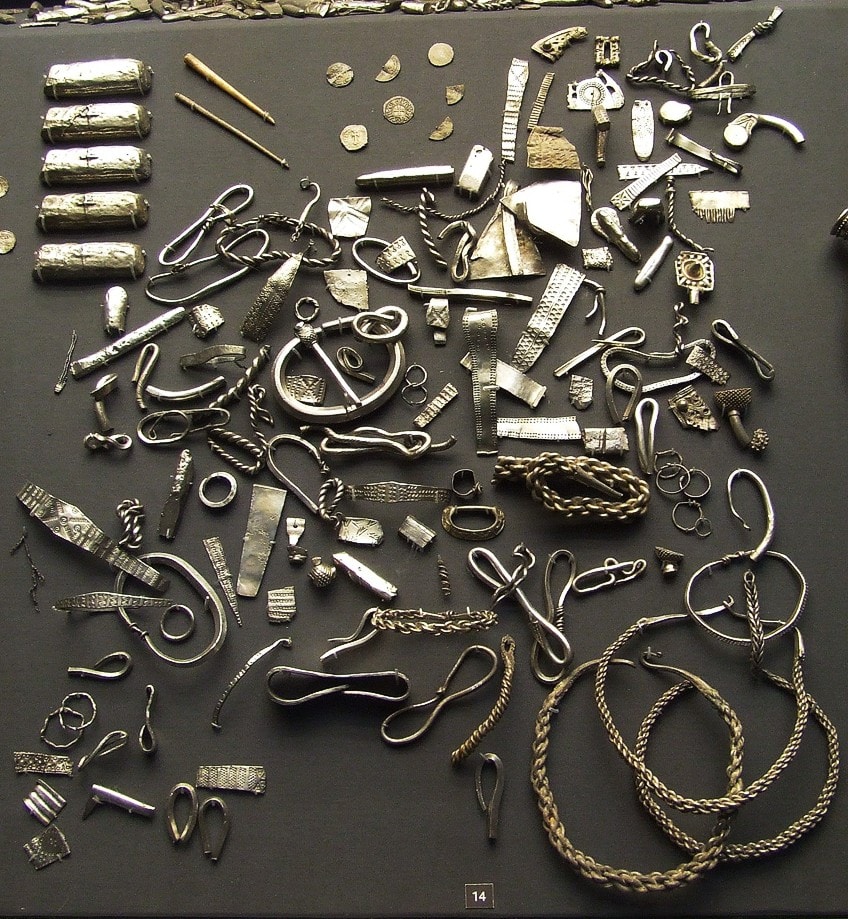
One of the most exceptional aspects of this particular hoard is the stunning array of sources of the coins. There were items from throughout Europe and beyond at the time. There were coins from the Kingdom of Wessex, some from the Byzantine Empire, and others from Islamic, Carolingian, and Aquitaine sources. It was a remarkable collection and the majority of it can be found in the British Museum to this day.
Vale of York Hoard (927 – 928 CE) from Harrogate
| Date | 927 – 928 CE |
| Materials Used | Various |
| Function | Hoard |
| Discovery Location | Harrogate, England |
The Vale of York Hoard is another of the many Viking hoards that have been uncovered. This is another of the hoards that were discovered in England, but it is a significantly smaller collection of Norse artifacts than the Cuerdale Hoard. It is, however, the largest hoard to have been discovered in the country since that larger hoard. It was also only uncovered in 2007.
This particular hoard was made up of a collection of 617 coins and a variety of other items.
The collection was also found in a field that had not yet been plowed that season, and it was discovered by a father and son pair who immediately reported the find and did not unpack it to examine it. They left it to the experts. The hoard was then transferred to the British Museum so that it could be studied.

Some of the items in the hoard, aside from the coins, include a number of ingots, ornaments, precious metals, and a gold arm ring. Furthermore, the whole hoard was hidden inside a silver vessel that may have been produced in a Carolingian workshop and may have been made by the same people who created the Halton Moor cup. The entire hoard, and the cup, was protected with lead sheets. The many items in the hoard were from a diverse range of sources, as is quite common in Viking hoards.
Mammen aX (970 – 971 CE) from Mammen
| Date | 970 – 971 CE |
| Materials Used | Iron and silver |
| Function | ax |
| Discovery Location | Mammen, Denmark |
The Mammen Ax is one of the most famous instances of a Viking ax ever discovered, and as such, it is one of the most famous Viking artifacts to have ever been discovered. This particular ax is also considered to be a stunning example of the craftsmanship of the Viking smiths who created the weapons that were taken to war by the Norse. The ax shows a fantastic dedication to both functionality and artistry as the ax is decorated with a stunning array of intricate patterns.
These patterns make use of animal and vegetal motifs, and it was made out of iron, but included a silver inlay. It has come to be considered one of the best-preserved Viking artifacts in the world. The fame of this particular Viking ax has led to it being a common template for replica Viking axes. The original ax is on display, but images of it have become some of the most circulated with regard to Viking ax design, and it is a truly stunning example of the kind of craftsmanship that the Norse were capable of.
Jelling Stones (10th Century CE) from Jelling
| Date | 10th century CE |
| Materials Used | Stone |
| Function | Runestones |
| Discovery Location | Jelling, Denmark |
The Jelling Stones are a collection of ancient runestones. These particular artifacts are located in the town of Jelling in Denmark. These beautiful Viking artifacts contain intricate carvings over practically every exposed surface. The two stones were raised by two different kings, the oldest of the two by King Gorm the Old and the second by Harald Bluetooth, the son of Gorm the Old. The first of the stones is in memory of the deceased wife of Gorm the Old while the second, larger stone serves multiple purposes: it commemorates Harald’s parents, celebrates the conquests that he led, and it signifies the conversion of the Danish people from the traditional Norse polytheistic religion to Christianity.
The location of the stones has since become a UNESCO World Heritage Site because it is considered to be a phenomenal example of both pagan and Christian Nordic culture.
However, as the stones were exposed to the elements for many centuries, the stones have started to somewhat degrade. It was recommended that they be transferred to an indoor site so that they could be better protected.
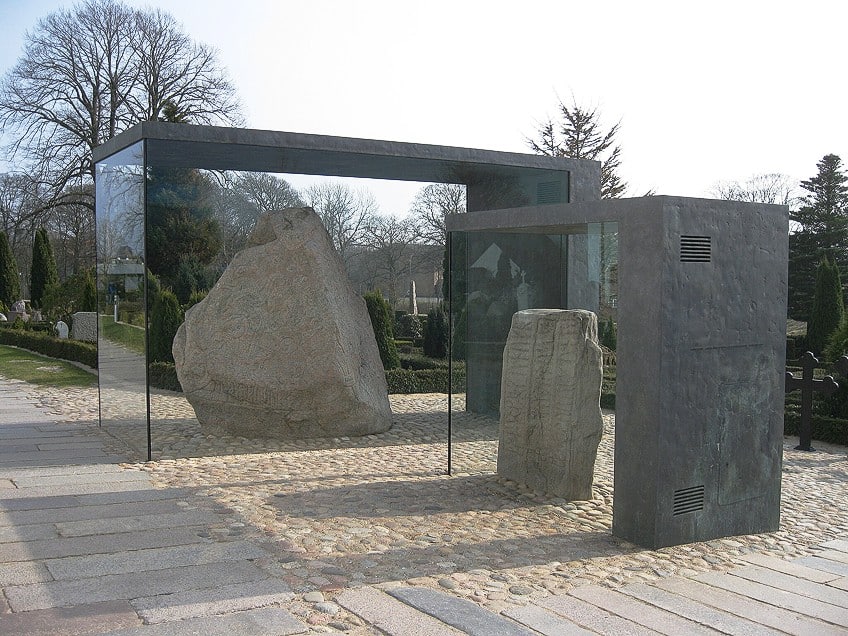
As if in answer to this, the site has been vandalized with green spray paint. Luckily, the paint had not yet hardened and so it could be removed. However, the Jelling stones have not been moved as it was deemed to be better to leave them where they currently stand. However, to avoid any further damage to these stunning Christian and Norse mythology artifacts, the stones have since been encased in a special glass case that maintains the temperature and humidity to ensure that they remain protected.
Hogbacks (10th – 12th Centuries CE) throughout the United Kingdom and Scandinavia
| Date | 10th – 12th centuries CE |
| Materials Used | Stone |
| Function | Grave markers |
| Discovery Location | Throughout the United Kingdom and Scandinavia |
Hogbacks are a fairly common type of Anglo-Scandinavian sculpture that could be found in various regions in the British Isles. They would eventually stop being created, but during their height, they were typically used as grave markers. They can be found in England, Scotland, Wales, and Ireland, and similar types can also be found in Scandinavian countries themselves.
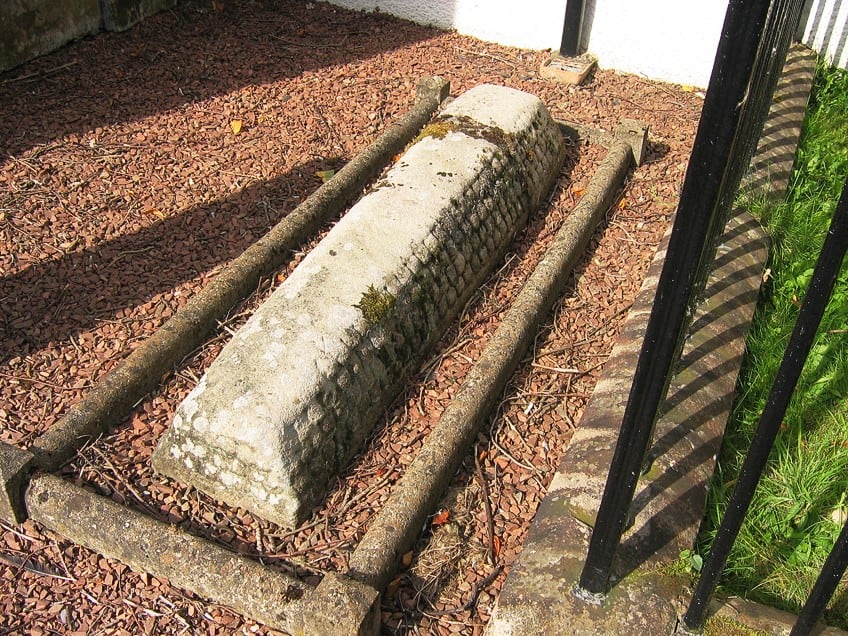
The shape of the hogback is what lent them the name they now possess. They have a curved ridge design that looks, somewhat, like a hog’s back. These Viking artifacts were then often decorated with designs. There are many of these hogbacks that have been discovered.
Vidöstern Sword (11th Century CE) from Vidöstern
| Date | 11th century CE |
| Materials Used | Iron |
| Function | Sword |
| Discovery Location | Vidöstern, Sweden |
The Vidöstern sword is not a famous sword of any description, but rather a somewhat delightful one. This is a single Viking sword that was discovered in the Vidöstern Lake. Upon its discovery, it was dated to be at least a thousand years old, but there is the possibility that it could be even older (possibly the 5th or 6th centuries BCE). However, we do not know for certain. The Viking sword, thanks to it being underwater for at least a millennium, is extremely rusted and so is a very poorly preserved item.
The reason this particular item is of interest though is because of how it was discovered.
It was found by an eight-year-old girl who was playing in the lake. She claimed that she felt something in the water that appeared to be a stick, so she reached in to grab it and pulled it out. She then reportedly ran to her father while yelling that she’d found a sword.
The location the sword was discovered was then investigated by experts and other items were discovered that were dated similarly to the Viking sword. It is theorized that the site may have been used for sacrifice, but it is uncertain. However, more importantly, the young girl who found it, once she was allowed to tell others about it, had a party thrown for her in school and she even got to give some interviews.
Ax Head (11th – 12th Centuries CE) from Norway
| Date | 11th – 12th centuries CE |
| Materials Used | Silver and steel |
| Function | ax |
| Discovery Location | Norway |
The Ax Head in the Met is part of a far larger overall collection of Viking artifacts that is located in the Met in New York City. This particular ax head is considered to be one of the most stunning examples that has ever been uncovered. Much like other instances of ancient Norse weaponry, it is intricately carved with symbols that combine the practical sensibilities of the Norse warriors with the need for artistry. These kinds of highly decorated weapons would have served as important and valuable items for the Vikings who carried them.
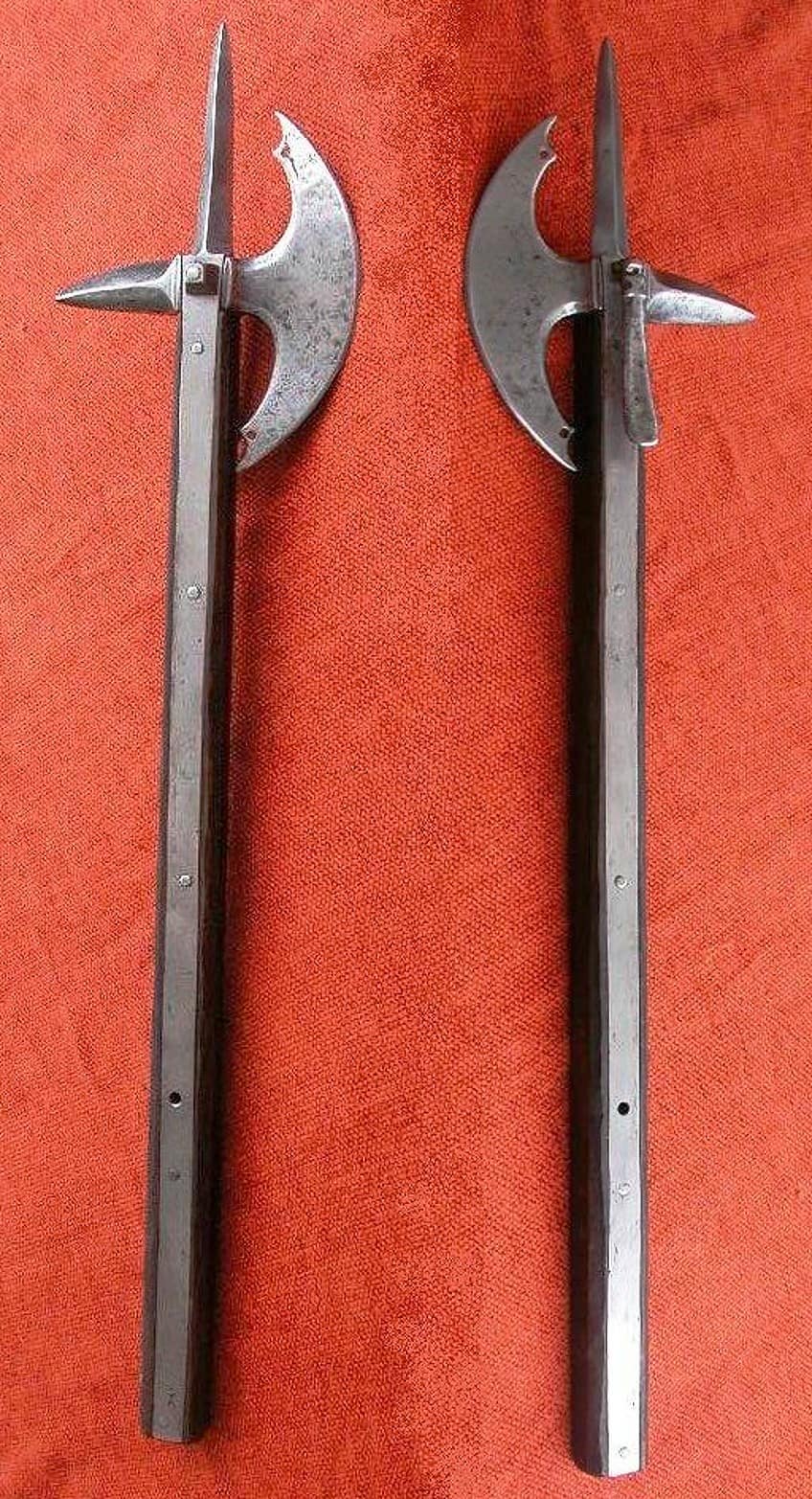
There are many ax heads in the Met, but the most significant of them all is in the Mammen style and was found somewhere in Norway. The exact location does not appear to be known. However, it is considered to be one of the most elaborate Viking ax heads to have ever been uncovered, and the silver inlay is particularly stunning.
Lewis Chessmen (12th Century CE) from Uig
| Date | 12th century CE |
| Materials Used | Ivory |
| Function | Chess pieces |
| Discovery Location | Uig, Scotland |
The Lewis chessmen are some of the most famous of all Viking relics. They originate from a far later period in the Viking Age and were uncovered in Scotland. However, they are some of the few examples of a medieval chessboard that has managed to survive into the modern era. The site at which they were discovered also led to the discovery of several other Viking relics, but the Lewis chessmen are the most famous of them all.
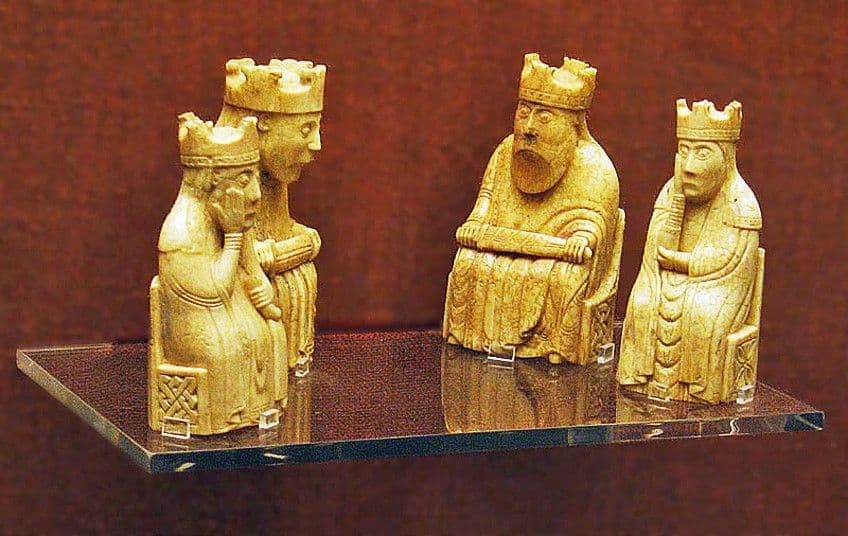
These chess pieces were predominantly carved from ivory, but not the ivory from an elephant, but rather from walrus tusk. However, a few of them appear to have been made from whale teeth too. The full chess set includes far more than is necessary for a singular chess set as there are eight kings and queens, sixteen bishops and one fewer knight, nineteen pawns, and thirteen rooks. However, while the number of queens, bishops, kings, and nearly knights could account for eight separate chess sets, the number of pawns is enough for a little more than one set.
And with that, we come to the end of our discussion about Viking artifacts. We have examined fifteen different Norse artifacts from throughout the Viking Age, such as weapons, hoards, and other items. Hopefully, this has given you a good overview of some of what the Vikings both created and looted from other regions. However, there are always artifacts from many other cultures to examine.
Frequently Asked Questions
What Are Viking Artifacts?
Viking artifacts are essentially any item that has been uncovered that belonged to Viking people. This does not necessarily mean that the items that are termed Viking relics were necessarily made by them, as the Vikings were, famously, plunderers. Viking artifacts include weapons, tools, clothing, runes, ships, and many other things. Coins are likely found most, and valuable Viking glass and jewelry are also often some of the most sought-after Viking relics.
Who Were the Vikings?
The Vikings were a large and disparate group of people who hailed from what is modern-day Scandinavia. They were predominantly known as competent seafarers, explorers, and warriors. They are perhaps best known, today, as raiders and plunderers who invaded various regions and were even considered to be from hell by some of the Christian groups they attacked. They are also very well known for their belief in Valhalla, an afterlife for those who die in battle.
When Was the Viking Era?
The Viking Age ranged from the 8th to the 11th centuries. The beginning of the Viking Age is generally considered to be the 793 CE Lindisfarne raid, in which Vikings attacked a monastery. There were many conflicts between various European nations and the Vikings, and the Vikings famously managed to invade Paris and large swaths of England. The end of the Viking Age is generally seen as the defeat of their army at the Battle of Stamford Bridge in 1066 CE. However, England was attacked that same year by the forces of William the Conqueror, who was descended from a Viking. So, did the Viking Age truly end or did it simply get a new name?
What Is the Most Famous Viking Artifact?
The many hoards that have been uncovered are likely some of the most famous of all the Viking artifacts that have been discovered. However, one can also argue that the Ulfberht swords and the Lewis Chess Pieces are some of the most famous. However, many of the ancient Norse artifacts that have been found were those plundered from other sources. So, it depends on how one defines a Viking artifact.
Who Are the Modern Descendants of the Vikings?
There are descendants of the Vikings throughout the world, but the Scandinavian countries are the most commonly cited. These include Norway, Sweden, Denmark, Iceland, and Greenland. However, the Vikings also settled in the British Isles, France, Ukraine, and Russia, and the Vikings were also the first Europeans to actually reach the Americas, so they are everywhere. Additionally, King Charles III is descended from William the Conqueror, who was descended from Duke Rollo of Normandy (who was a Viking).
Justin van Huyssteen is a freelance writer, novelist, and academic originally from Cape Town, South Africa. At present, he has a bachelor’s degree in English and literary theory and an honor’s degree in literary theory. He is currently working towards his master’s degree in literary theory with a focus on animal studies, critical theory, and semiotics within literature. As a novelist and freelancer, he often writes under the pen name L.C. Lupus.
Justin’s preferred literary movements include modern and postmodern literature with literary fiction and genre fiction like sci-fi, post-apocalyptic, and horror being of particular interest. His academia extends to his interest in prose and narratology. He enjoys analyzing a variety of mediums through a literary lens, such as graphic novels, film, and video games.
Justin is working for artincontext.org as an author and content writer since 2022. He is responsible for all blog posts about architecture, literature and poetry.
Learn more about Justin van Huyssteen and the Art in Context Team.
Cite this Article
Justin, van Huyssteen, “Viking Artifacts – A Glimpse into Norse History.” Art in Context. October 12, 2023. URL: https://artincontext.org/viking-artifacts/
van Huyssteen, J. (2023, 12 October). Viking Artifacts – A Glimpse into Norse History. Art in Context. https://artincontext.org/viking-artifacts/
van Huyssteen, Justin. “Viking Artifacts – A Glimpse into Norse History.” Art in Context, October 12, 2023. https://artincontext.org/viking-artifacts/.


